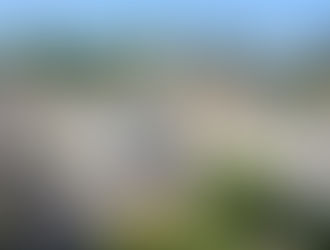EASTER: the Rites of the Holy Week in Taranto
- Paolo Casavola
- 13 feb 2014
- Tempo di lettura: 3 min
As Easter is drawing near, we can’t help speaking about the rites of the Holy Week. These rites connect and define the cultural and religious traditions of almost whole Apulia: from the smallest villages to the towns, everyone is highly emotionally involved in these events.
“Passion” rites are particularly spectacular and full of pathos: in some towns, such as Alberobello (Bari), Ginosa (Taranto) or Conversano (Bari), the Passion of Christ is commemorated by real people who, thanks to natural sceneries such as “gravine” (a sort of canyons due to Karst phenomena) or old town centres, can stage its events with an unbelievable emotional potential, attracting tourists from any part of Italy and of Europe.
Processional rites are much more numerous. They are marked out by slow processions on Holy Thursday and Holy Friday, accompanied by funeral marches. Among them we can refer to the ones of Bisceglie (Bari), Noicattaro (Bari), Francavilla Fontana (Brindisi), Troia (Foggia) and, above all, to the ones of Taranto, now a symbol of Easter rites in Apulia.
Just in Taranto the appointment of the Holy Week is one of the most heartfelt , attended events in the town, whose centre is blocked almost two days. Palm Sunday, which anticipates Easter, is the starting point for the Holy Week during which the two biggest religious confraternities, the one of Our Lady of Sorrows and San Domenico (located in the Church of San Domenico, in the OldTown) and the one of Our Lady of Mount Carmel (located in the Church of Carmine in the New Town) set up a passionate, exhausting auction for the award of the Statues and the symbols of the two processions, the one of Our Lady of Sorrows and the one of the Mysteries.
The first act of the Holy Week is performed by some couples of “brothers” coming out of the Church of Carmine in the afternoon of Holy Thursday, who begin their pilgrimage through the churches of the new and the old centre of the town. People use to say they are visiting the “Sepulchres”, but, in reality, churches are adorned to commemorate the institute of the Holy Communion. Such couples of “brothers” of the Church of Carmine , called “perdoni”, are characterized by a dress formed by a white tight- waisted tunic, a black belt symbolizing the whip which hit Jesus, a black rosary hanging laterally, a white cowl with two small holes at eye height and a black light-blue-edged hat, put on the head over the cowl or leaning on the shoulders. Moreover, the “Perdoni” take an about two-metre-high mace named “bordone” symbolizing the ancient pilgrim’s staff: in fact the “Perdoni” are so named in remembrance of the pilgrims who used to go to Rome to be forgiven for their sins. Another feature is their bare-footed walking, with a swinging, very slow step whose name is “nazzecata”, according to Taranto dialect.
On Thursday, at midnight, from the Church of San Domenico, in the old town, there starts the procession of Our Lady of Sorrows which will reach the new town and then will be back after fourteen hours of slow walking. The procession is led by a “troccolante”, a “perdono” who beats the rhythm of the procession by means of an instrument named “troccola”, then there are the “pesàre” (who represent the stones thrown at Jesus), the Cross of the Mysteries, the crucifers, fourteen couples of brothers, the throne and, finally, the statue of Our Lady of Sorrows, carried on their shoulders by four brothers in their ritual dresses and four helpers dressed in black .
On Holy Friday, in the afternoon, from the Church of Carmine, there starts the procession of the Mysteries symbolizing the Passion of Christ. It is accompanied by bands playing funeral marches and proceeds through the streets among numerous citizens and tourists. It will be back to the Church of Carmine on Saturday morning following a very heartfelt rite. The “troccolante” knocks on the main door of the church with his “bordone” three times, the start of a time of deep sadness and meditation which will last till midnight, when bells announce the resurrection of Christ and the end of the rites.
This year the authorities of the region and Taranto tradesmen have fixed some facilities for the tourists who want to visit Taranto during Easter with offers not only for lodging but also for tasting the genuine, traditional flavours of Taranto cooking, such as "Cozze Arraganate" (Mussel gratin): a further spur to plan a surely emotional, suggestive journey!
Author: Paolo Casavola


































Commenti